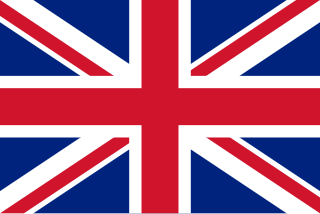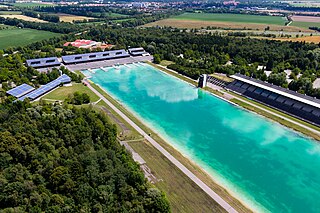
Great Britain, represented by the British Olympic Association (BOA), competed at the 1936 Summer Olympics in Berlin, Germany. 208 competitors, 171 men and 37 women, took part in 91 events in 17 sports. British athletes have competed in every Summer Olympic Games.

Switzerland competed at the 1936 Summer Olympics in Berlin, Germany. 190 competitors, 184 men and 6 women, took part in 100 events in 21 sports.

Germany was the host nation and top medal recipient at the 1936 Summer Olympics in Berlin. 433 competitors, 389 men and 44 women, took part in 143 events in 22 sports.
The men's coxless fours was a rowing event held as part of the rowing programme at the 1904 Summer Olympics. It was the first time the event was held at the Olympics. The competition was held on Saturday, July 30, 1904. Three American crews competed.

Thomas James MBE is a British rower, twice Olympic champion and victorious Cambridge Blue. In a British coxless four in 2012 he set a world's best time which still stood as of 2021.
The men's coxless fours event was part of the rowing programme at the 1924 Summer Olympics. The competition, the third appearance of the event, was held from 14 to 17 July 1924 on the river Seine. Four teams, each from a different nation, competed, with Great Britain winning the gold medal.
The men's coxless four competition at the 2012 Summer Olympics in London took place at Dorney Lake which, for the purposes of the Games venue, is officially termed Eton Dorney.

The men's lightweight coxless four competition at the 2012 Summer Olympics in London took place are at Dorney Lake which, for the purposes of the Games venue, is officially termed Eton Dorney.

The men's coxless four event was part of the rowing programme at the 1928 Summer Olympics. It was one of seven rowing events for men and was the fourth appearance of the event.
Jacob Jepsen Barsøe is a Danish rower who won a silver medal at the 2016 Summer Olympics and bronze medal at the 2012 Summer Olympics, both in the men's lightweight sculls.

The men's coxless four competition at the 1972 Summer Olympics in Munich took place from 27 August to 2 September at the Olympic Reggatta Course in Oberschleißheim.
The men's coxless four competition at the 2000 Summer Olympics in Sydney, Australia took place at the Sydney International Regatta Centre.
The Men's coxless four competition at the 1932 Summer Olympics in Los Angeles took place at the Long Beach Marine Stadium.
The men's coxless fours competition at the 1960 Summer Olympics took place at Lake Albano, Italy. The event was held from August 31 until September 3.

The men's coxless four (M4-) rowing competition at the 1980 Summer Olympics took place at Krylatskoye Sports Complex Canoeing and Rowing Basin, Moscow, Soviet Union. The event was held from 20 to 27 July.
The men's coxless pair competition at the 1936 Summer Olympics in Berlin took place are at Grünau on the Langer See.

The men's coxed four competition at the 1936 Summer Olympics in Berlin took place are at Grünau on the Langer See. It was held from 12 to 14 August. There were 16 boats from 16 nations, with each nation limited to a single boat in the event. The event was won by Germany, the second time the nation had won two consecutive gold medals in the men's coxed four. Germany's four gold medals overall was the most any nation won in the event before it was discontinued; four nations won two. Switzerland, which had won three straight medals in the 1920s before not competing in 1932, returned to the podium with a silver medal. Bronze went to France, the nation's first medal in the event since 1924. Both Italy and Poland had two-Games medal streaks broken.
The men's coxless four (M4-) competition at the 1984 Summer Olympics took place at Lake Casitas in Ventura County, California, United States. It was held from 31 July to 5 August and the outcome was wide open due to the Eastern Bloc boycott and thus the absence of the dominating team from the Soviet Union, and previously East Germany. The event was won by the team from New Zealand.
The men's coxless four (M4-) competition at the 1976 Summer Olympics took place at the rowing basin on Notre Dame Island in Montreal, Quebec, Canada. It was held from 18 to 25 July and was won by the team from East Germany.

The men's coxed four competition at the 1948 Summer Olympics in London took place at Henley-on-Thames, London. It was held from 5 to 9 August. There were 16 boats from 16 nations, with each nation limited to a single boat in the event. The event was won by the United States, the nation's first victory in the men's coxed four. Switzerland earned silver, the nation's fifth medal in the event in six Games. Denmark took its first medal in the men's coxed four since 1912, with bronze.










